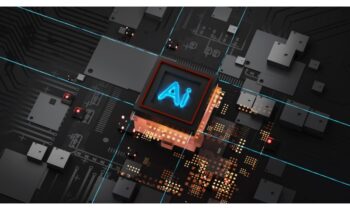Contrary to popular belief, liquidity mining is far removed from the crypto mining associated with Proof of Work mechanisms used by the likes of Bitcoin to securely process blockchain transactions. In contrast liquidity mining is simply how users can provide their token assets to an exchange to provide much needed liquidity for an exchange. This smart contract enabled solution to the problem of low liquidity is designed to facilitate the number of orders for buying and selling transactions, by giving users an incentive to provide the crypto in return for a share of the fees.
The liquidity mining solution and associated incentives to users providing their assets was first a solution devised to support the growth of decentralized exchanges (DEXs). This mechanism, balancing the amount of liquidity especially when faced with high volatility or low volume is increasingly being used by centralized exchanges such as to BigONE to better meet the trading needs of buyers and sellers. What’s doubly attractive is that as well as helping resolve liquidity issues the same transaction fees paid by users during transactions can be shared by exchanges as transaction fee dividends for liquidity providers. A traditional finance world analogy would be buying shares in a company, which is rewarded to shareholders in the form of dividends.
Within DEXs the focus has been providing a fair price for traders when seeking to swap between currencies, where low volume or high volatility caused ‘slippage’ to use the technical jargon. Namely, that if there aren’t e assets to cover a trade the actual price paid can far exceed the original market price. The clever aspect to liquidity pools is that they employ automated market maker (AMM) algorithms to ensure the price of tokens in a swap are stable. That’s the principle behind how it works but of course it’s not a perfect system, for one thing with DEXs which are automated market mechanisms there remains the risk that such smart contracts will be attacked by hackers. For example, in 2020 a hacker got away with $500k after exploiting a loophole in the DeFi liquidity provider Balancer.
The risks of liquidity mining
The fall in the price of cryptocurrencies that poses a risk to liquidity mining. While liquidity providers gaining income from the fee-sharing, if the price of the cryptocurrency deposited a given period drops, they will still suffer losses. However, as with holding any crypto asset in the longer term as an investment if the liquidity providers are long-term holders of a certain cryptocurrency, then earning income through liquidity mining is good option.
There exists another risk that cannot be ignored – what’s called impermanent loss. Impermanence loss is an inevitable part of the liquidity mining process. When a user participates in a liquidity mining service, they must invest in two cryptocurrencies. Although the same two cryptocurrencies can be redeemed, the relative proportion and total value of redeemed cryptocurrencies will change based on the rise and fall of currency prices. In special circumstances such as skyrocketing prices in an asset, holding cryptocurrency directly will result in higher returns than investing crypto in the liquidity pool. This difference is called impermanent loss.
While inevitable, as the price of tokens gradually returns, this temporary loss of funds will be wiped out gradually. Furthermore, the longer the liquidity provider provides liquidity to the mining pool, taking into consideration with the accumulation of fees in the trading market, the overall income of the liquidity provider will usually exceed the temporary loss.
In comparison to holders of cryptocurrency in spot trading, disregarding the losses caused by currency price declines, the profit potential is high despite the risks and impermanent losses. In this way it’s optimal to see liquidity mining as a long-term play, as part of your investment strategy, rather than as a trading technique.
Liquidity mining with a centralized exchange
While no two exchanges are precisely the same in how they run liquidity mining in the case of BigONE when a liquidity provider deposits cryptocurrency into the liquidity funding pool and a trade transaction occurs, the exchange charges both parties in the transaction a fee. Simultaneously, BigONE then pays a percentage of the fee to users who participate in the liquidity mining, with additional reward tokens will be distributed to users in real-time. While the best-known decentralized provider for trading liquidity and trading Uniswap is certainly popular, as with other DEXs there is the ever-present risk of third-party attacks. The advantage of using a centralized exchange is that you benefit from the rewards of liquidity mining with the security and support a centralized exchange provides.
More information about BigONE Exchange can be found at www.big.one.



